Type of resources
Topics
Keywords
Contact for the resource
Provided by
Years
Formats
Representation types
Update frequencies
status
Scale
Resolution
-
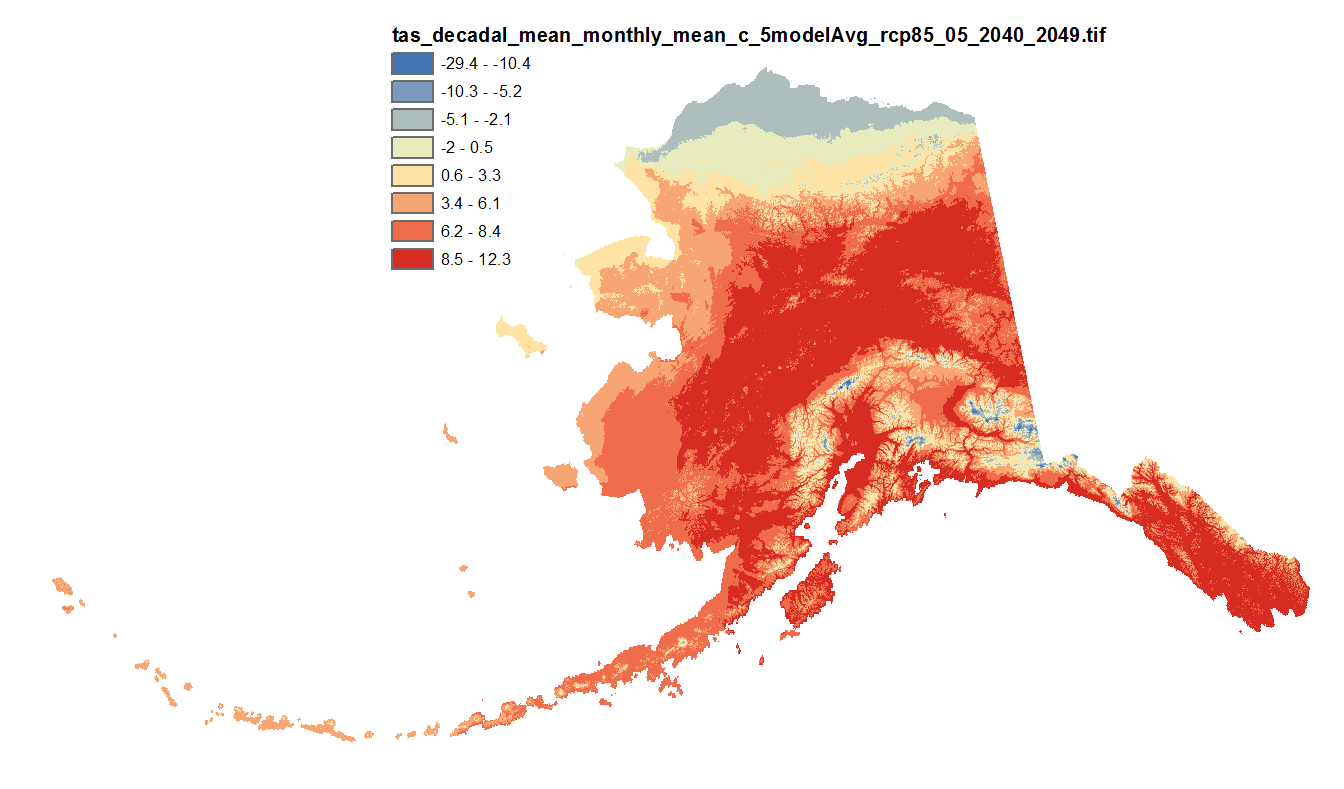
This set of files includes downscaled projections of monthly means, and derived annual, seasonal, and decadal means of monthly mean temperatures (in degrees Celsius, no unit conversion necessary) from Jan 2006 - Dec 2100 at 771x771 meter spatial resolution. For seasonal means, the four seasons are referred to by the first letter of 3 months making up that season: * `JJA`: summer (June, July, August) * `SON`: fall (September, October, November) * `DJF`: winter (December, January, February) * `MAM`: spring (March, April, May) The downscaling process utilizes PRISM climatological datasets from 1971-2000. Each set of files originates from one of five top-ranked global circulation models from the CMIP5/AR5 models and RCPs or is calculated as a 5 Model Average.
-
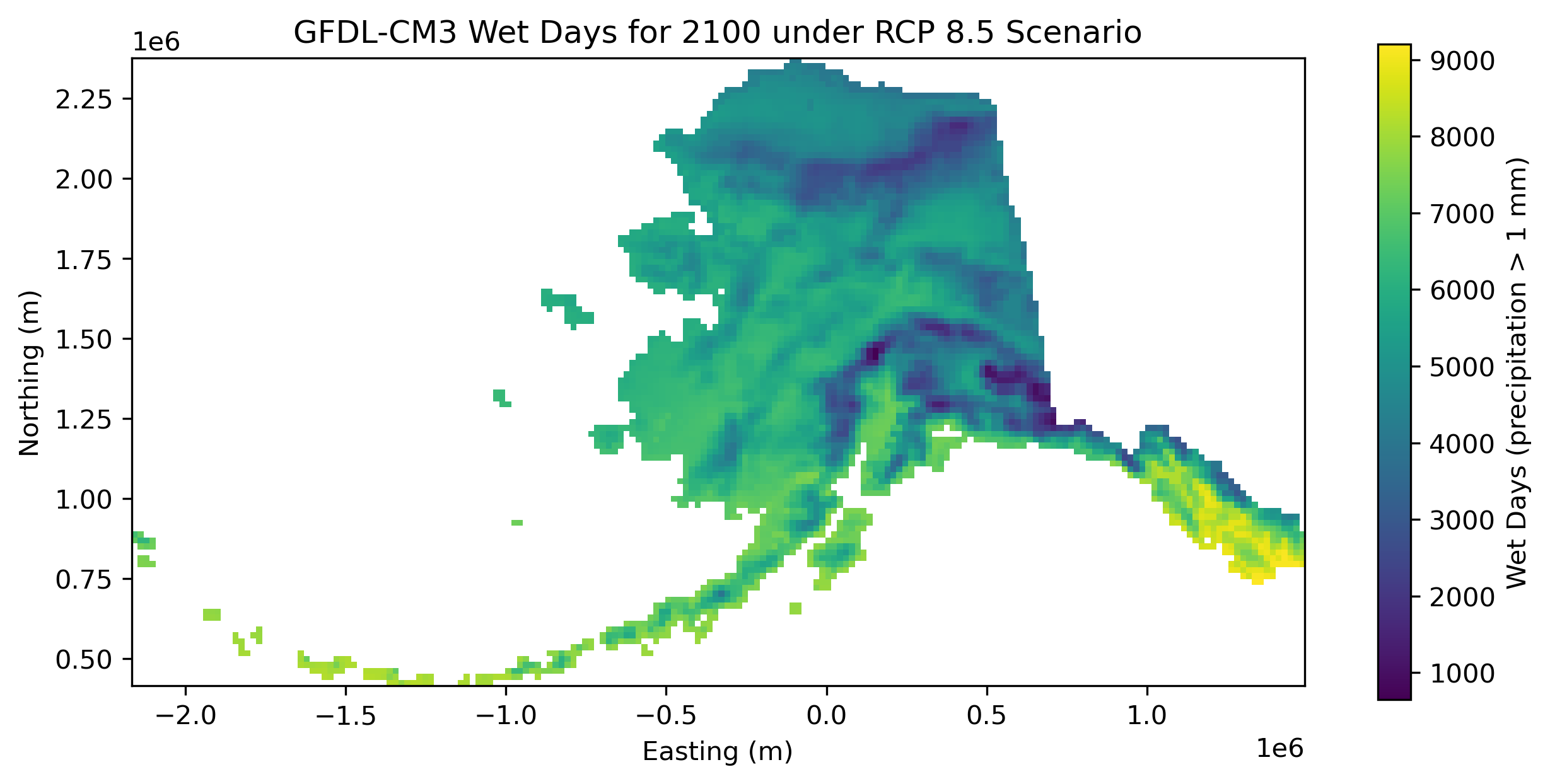
This dataset consists of single band GeoTIFFs containing total annual counts of wet days for each year from 1980-2100 for one downscaled reanalysis (ERA-Interim, 1980-2015) and two downscaled CMIP5 global climate models driven under the RCP 8.5 baseline emissions scenario (NCAR-CCSM4 and GFDL-CM3, 2006-2100), all derived from the same dynamical downscaling effort using the Weather Research and Forecasting (WRF) model (Version 3.5). A day is counted as a "wet day" if the total precipitation for that day is 1 mm or greater.
-
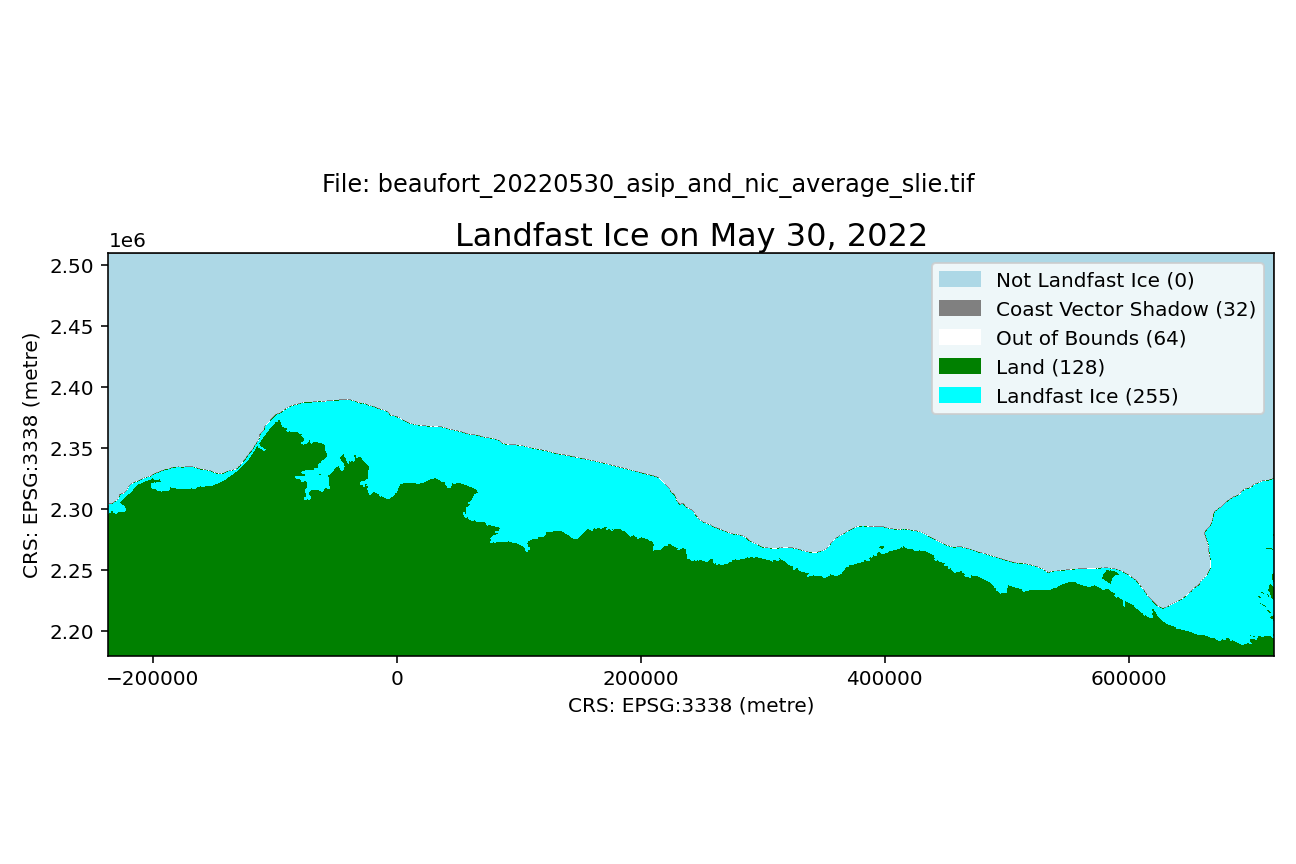
A dataset of landfast ice extent along the Alaska coast of the Beaufort Sea and adjacent waters in Canada spanning the winters of 1996-2023. Landfast ice extent is defined as the area between the coast and the seaward landfast ice edge (SLIE), meaning that small areas of open water than can form at the coast springtime will not be represented. Spatial resolution is 100 m. Compilation of the dataset is described in detail by Mahoney et al (2024). In brief, it is derived from three sources: From 1996-2008, the dataset is derived from analysis of sequential synthetic aperture radar (SAR) images from the RadarSAT and EnviSAT constellations, as described by Mahoney et al (2014); From 2008-2023, the data represent an average landfast extent identified in ice charts from the U.S. National Weather Service Alaska Sea Ice Program (ASIP) and the U.S. National Ice Center (NIC). Within each GeoTIFF file there are 5 different pixel values representing different characteristics: 0 - Not Landfast Ice 32 - Coast Vector Shadow 64 - Out of Bounds 128 - Land 255 - Landfast ice The file naming convention is as follows: beaufort_$YYYYMMDD_$source_slie.tif For example, the name beaufort_20170302_asip_and_nic_average_slie.tif indicates the file represents data for March 2, 2017 and that the data is derived from an average of the ASIP and NIC data sources. These data were updated on August 21, 2025 to rectify the omission of some NIC chart data sources for the 2017-18 and 2018-19 seasons.
-
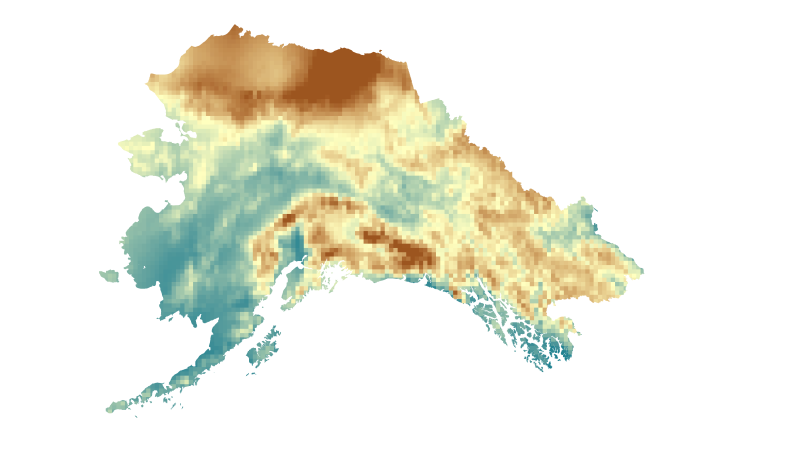
This set of files includes downscaled future projections of vapor pressure (units=hPa) at a 1km spatial scale. This data has been prepared as model input for the Integrated Ecosystem Model (IEM). There can be errors or serious limitations to the application of this data to other analyses. The data constitute the result of a downscaling procedure using 2 General Circulation Models (GCM) from the Coupled Model Intercomparison Project 5 (CMIP5) for RCP 8.5 scenario (2006-2100) monthly time series and Climatic Research Unit (CRU) TS2.0 (1961-1990,10 min spatial resolution) global climatology data. Please note that this data is used to fill in a gap in available data for the Integrated Ecosystem Model (IEM) and does not constitute a complete or precise measurement of this variable in all locations. RCPs: 8.5 Centers, Model Names, Versions, and Acronyms: National Center for Atmospheric Research,Community Earth System Model 4,NCAR-CCSM4 Meteorological Research Institute,Coupled General Circulation Model v3.0,MRI-CGCM3 Methods of creating downscaled relative humidity data: 1. The GCM input data are distributed as relative humidity along with the CRU CL 2.0, therefore no conversion procedure was necessary before beginning the downscaling procedure. 2. Proportional Anomalies generated using the 20c3m Historical relative humidity data 1961-1990 climatology and the projected relative humidity data (2006-2100). 3. These proportional anomalies are interpolated using a spline interpolation to a 10min resolution grid for downscaling with the CRU CL 2.0 Relative Humidity Data. 4. The GCM proportional anomalies are multiplied by month to the baseline CRU CL 2.0 10min relative humidity climatology for the period 1961-1990. Creating a downscaled relative humidity projected time series 2006-2100. 5. Due to the conversion procedure and the low quality of the input data to begin with, there were values that fell well outside of the range of acceptable relative humidity (meaning that there were values >100 percent), these values were re-set to a relative humidity of 95 at the suggestion of the researchers involved in the project. It is well known that the CRU data is spotty for Alaska and the Circumpolar North, due to a lack of weather stations and poor temporal coverage for those stations that exist. 6. The desired output resolution for the AIEM modeling project is 1km, so the newly created downscaled time series is resampled to this resolution using a standard bilinear interpolation resampling procedure. 7. The final step was to convert the downscaled relative humidity data to vapor pressure using the calculation below, which uses a downscaled temperature data set created utilizing the same downscaling procedure. EQUATION: saturated vapor pressure = 6.112 x exp(17.62 x temperature/(243.12+temperature)) vapor pressure = (relative humidity x saturated vapor pressure)/100
-

This set of files includes downscaled projected estimates of monthly temperature (in degrees Celsius, no unit conversion necessary) from 2006-2300* at 15km x 15km spatial resolution. They include data for Alaska and Western Canada. Each set of files originates from one of five top ranked global circulation models from the CMIP5/AR5 models and RCPs, or is calculated as a 5 Model Average. *Some datasets from the five models used in modeling work by SNAP only have data going out to 2100. This metadata record serves to describe all of these models outputs for the full length of future time available. The downscaling process utilizes CRU CL v. 2.1 climatological datasets from 1961-1990 as the baseline for the Delta Downscaling method.
-
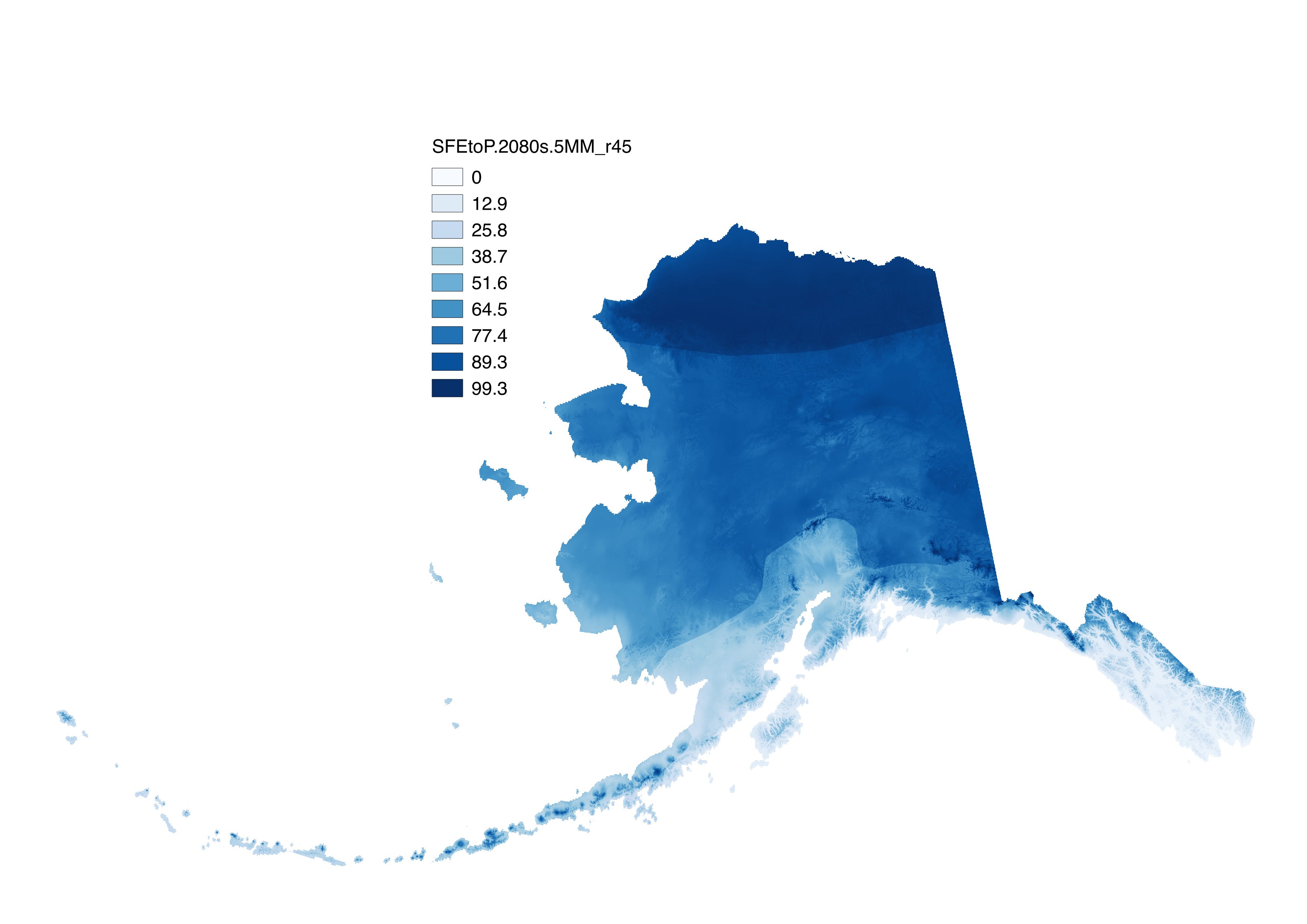
These files include climatological summaries of downscaled historical and projected decadal average monthly derived snow variables and summaries at 771 meter spatial resolution across Alaska. There are three types of files: 1). The historical and future snowfall water equivalent (SWE) in millimeters, produced by multiplying snow-day fraction by decadal average monthly precipitation and summing over 6 months from October to March to estimate the total SWE on April 1. 2). The historical and future ratio of SWE to total precipitation (SFEtoP) in percent. SFEtoP is calculated as (SWE / total precipitation) and also represents the six month October to March period. 3). The future difference in SWE with respect to the historical baseline (dSWE) in percent. dSWE is calculated as ((future SWE – historical SWE) / historical SWE) * 100. These data are also summary for the six month October to March period. The historical baseline period is 1970-1999, (file naming convention “H70.99”) and data are calculated from downscaled CRU TS 3.1 data. Projected variables exist for RCP 4.5 and RCP 8.5 emission scenarios and for 5 GCMs: NCAR-CCSM4, GFDL-CM3, GISS-E2-R, IPSL-CM5, and MRI-CGCM3. The 5-model mean (file naming convention "5MM") was also computed. Projections exist for three thirty-year climatologies: the 2020s (2010-2039), the 2050s (2040-2069), and the 2080s (2070-2099). The snow-day fraction data used can be found here: http://ckan.snap.uaf.edu/dataset/projected-decadal-averages-of-monthly-snow-day-fraction-771m-cmip5-ar5 http://ckan.snap.uaf.edu/dataset/historical-decadal-averages-of-monthly-snow-day-fraction-771m-cru-ts3-0-3-1 The precipitation data used can be found here: http://ckan.snap.uaf.edu/dataset/projected-monthly-and-derived-precipitation-products-771m-cmip5-ar5 http://ckan.snap.uaf.edu/dataset/historical-monthly-and-derived-precipitation-products-771m-cru-ts Note: In Littell et al. 2018, "SWE" is referred to as "SFE", and "SFEtoP" as "SFE:P"
-
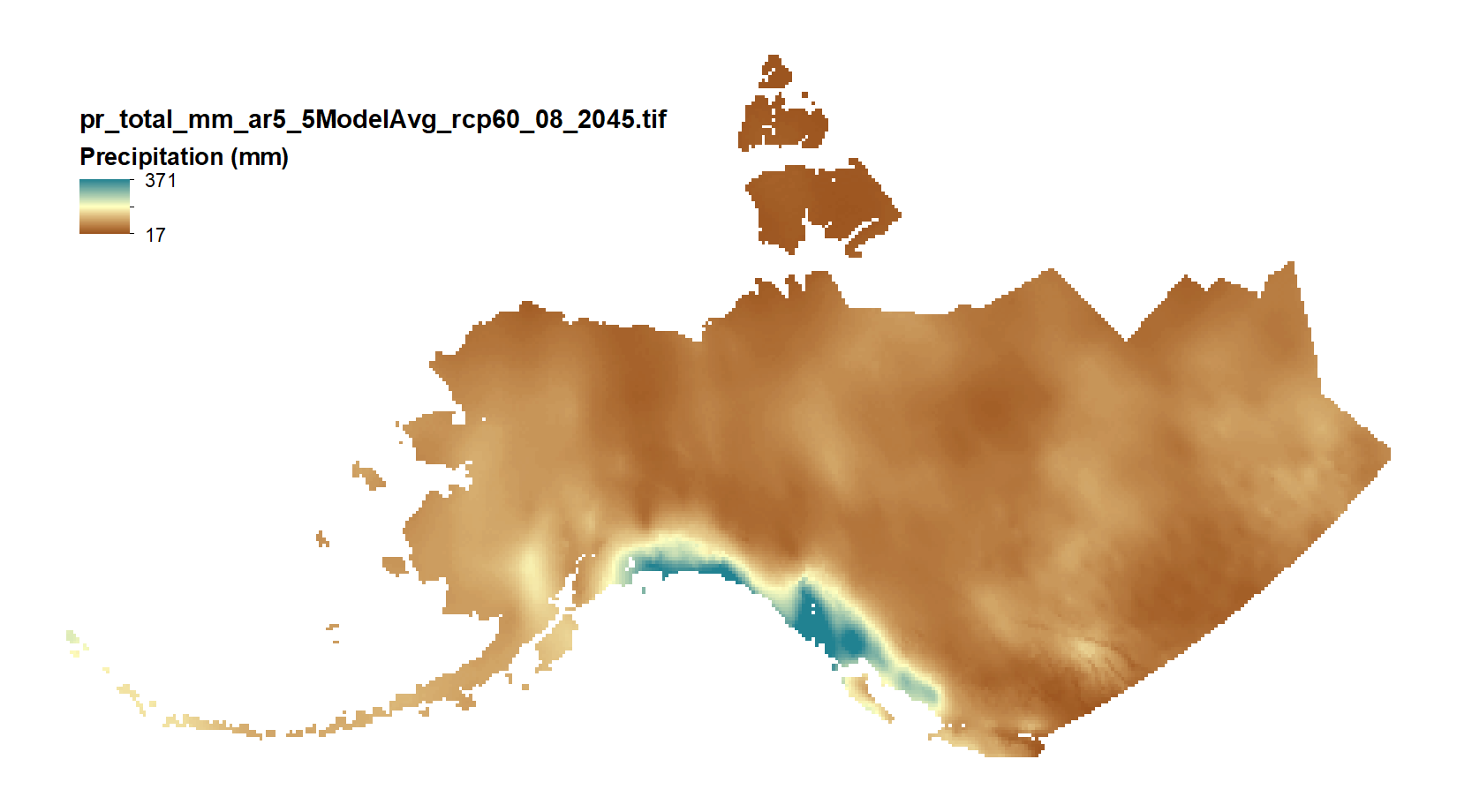
This set of files includes downscaled projections of monthly totals, and derived annual, seasonal, and decadal means of monthly total precipitation (in millimeters, no unit conversion necessary) from Jan 2006 - Dec 2100 at 771x771 meter spatial resolution. Each set of files originates from one of five top ranked global circulation models from the CMIP5/AR5 models and RPCs, or is calculated as a 5 Model Average. The downscaling process utilizes PRISM climatological datasets from 1971-2000. Brief descriptions of the datasets: Monthly precipitation totals: The total precipitation, in mm, for the month. For Decadal outputs: 1. Decadal Average Total Monthly Precipitation: 10 year average of total monthly precipitation. Example: All January precipitation files for a decade are added together and divided by ten. 2. Decadal Average Seasonal Precipitation Totals: 10 year average of seasonal precipitation totals. Example: MAM seasonal totals for every year in a decade are added together and divided by ten. 3. Decadal Average Annual Precipitation Totals: 10 year average of annual cumulative precipitation. For seasonal means, the four seasons are referred to by the first letter of 3 months making up that season: * `JJA`: summer (June, July, August) * `SON`: fall (September, October, November) * `DJF`: winter (December, January, February) * `MAM`: spring (March, April, May) Please note that these maps represent climatic estimates only. While we have based our work on scientifically accepted data and methods, uncertainty is always present. Uncertainty in model outputs tends to increase for more distant climatic estimates from present day for both historical summaries and future projections.
-
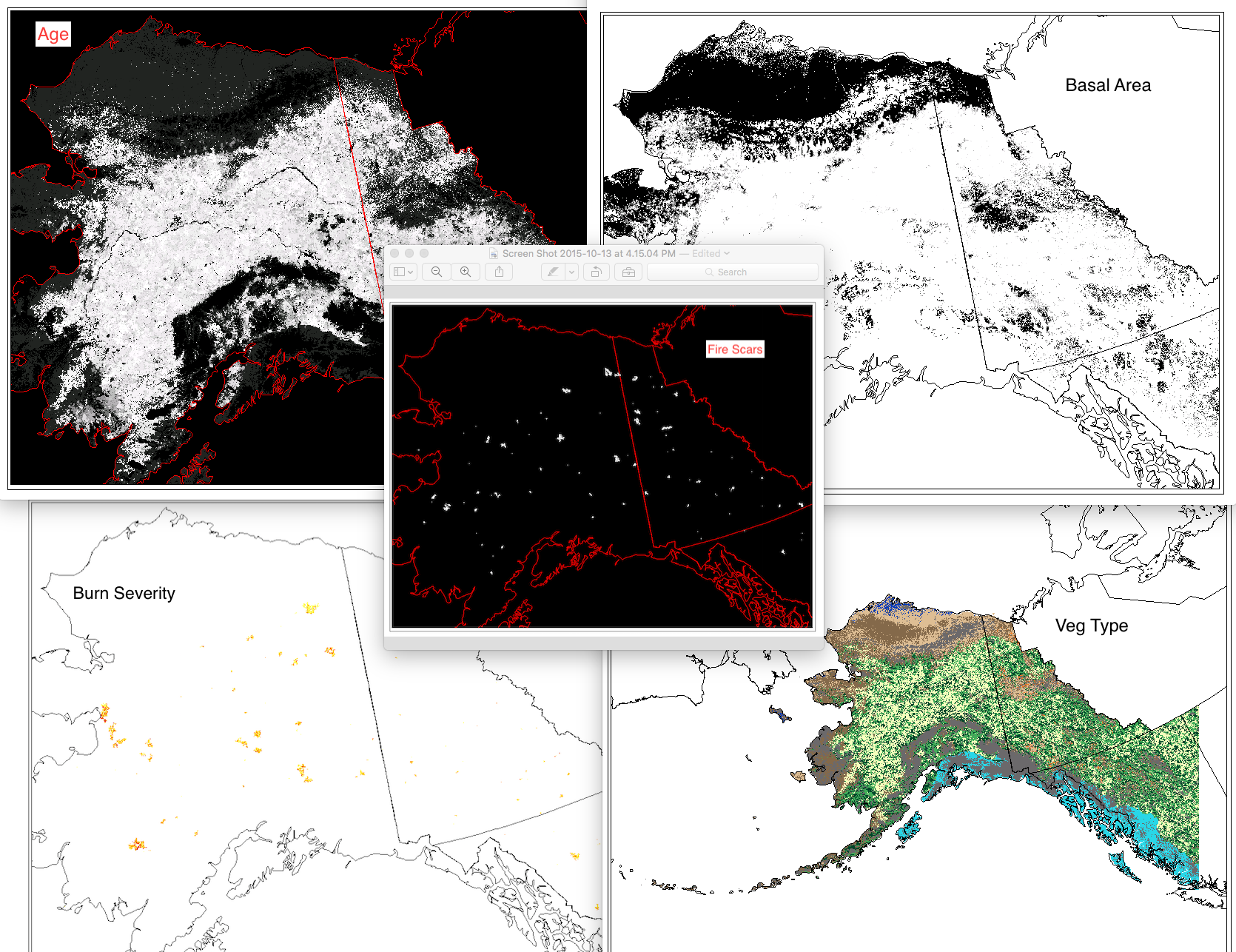
This set of files includes annual model outputs from ALFRESCO, a landscape scale fire and vegetation dynamics model. These specific outputs are from the Integrated Ecosystem Model (IEM) project, and are from the linear coupled version using AR4/CMIP3 climate inputs (IEM Generation 1-AR4) and AR5/CMIP5 climate inputs (IEM Generation 1-AR5). These outputs include data from model rep 171(IEM Generation 1-AR4) and rep 26 (IEM Generation 1-AR5), referred to as the “best rep” out of 200 replicates. The best rep was chosen through comparing ALFRESCO’s historical fire outputs to observed historical fire patterns. Single rep analysis is not recommended as a best practice, but can be used to visualize possible changes. Climate models and emission scenarios: IEM Generation 1-AR4/CMIP3 CCCMA-CGCMS-3.1 MPI-ECHAM5 under the SRES A1B scenario IEM Generation 1-AR5/CMIP5 MRI-CGCM3 NCAR-CCSM4 under RCP 8.5 scenario Variables include: Veg: The dominant vegetation for this cell. Current values are: 0 = Not Modeled 1 = Black Spruce 2 = White Spruce 3 = Deciduous Forest 4 = Shrub Tundra 5 = Graminoid Tundra 6 = Wetland Tundra 7 = Barren / Lichen / Moss 8 = Temperate Rainforest Age: This the age of the vegetation in each cell. An Age value of 0 means it transitioned in the previous year. Basal Area: The accumulation of basal area of white spruce in tundra cell, and is influenced by seed dispersal, growth of biomass, climate data, and other factors. units = m^2 / ha Burn Severity: This is a categorical burn severity level of the previous burn in the current cell, influenced by fire size and slope. For example, a burn severity value in a file with year 1971 in the file name means that the severity level given to that file occurred in the fire that occurred in year 1970. 0=No Burn 1=Low 2=Moderate 3=High w Low Surface Severity 4=High w/ High Surface Severity Fire Scar: These are the unique fire scars. Each cell has three values. Band 1 - Year of burn Band 2 - Unique ID for the simulated fire for that simulation year Band 3 - Whether or not the cell was an ignition location for a fire. There will only be 1 ignition cell per fire per year. 0 = not ignition 1 = ignition point For background on ALFRESCO, please refer to: Is Alaska's Boreal Forest Now Crossing a Major Ecological Threshold? Daniel H. Mann, T. Scott Rupp, Mark A. Olson, and Paul A. Duffy Arctic, Antarctic, and Alpine Research 2012 44 (3), 319-331 http://www.bioone.org/doi/abs/10.1657/1938-4246-44.3.319
-
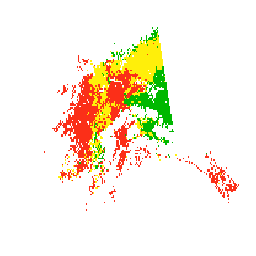
This dataset is the product of a climate-driven model of beetle survival and reproduction in Alaska. We used that model to create this dataset of landscape-level “risk” of the climatic component of beetle infestation across the forested areas of Alaska. This risk component can best be applied as protection of the landscape offered by the climate and is categorized as high, medium, and low. It does not consider other major factors, such as existing beetle and predator populations or forest susceptibility. We computed these values over one historical period (1988-2017) using Daymet data, and three future periods (2010-2039, 2040-2069, 2070-2099) using four statistically downscaled global climate model projections, each run under two plausible greenhouse gas futures (RCP 4.5 and 8.5).
-

This set of files includes downscaled historical estimates of monthly total precipitation (in millimeters, no unit conversion necessary, rainwater equivalent) from 1901 - 2013 (CRU TS 3.22) at 10 min x 10 min spatial resolution with global coverage. The downscaling process utilizes CRU CL v. 2.1 climatological datasets from 1961-1990.
 SNAP GeoNetwork
SNAP GeoNetwork